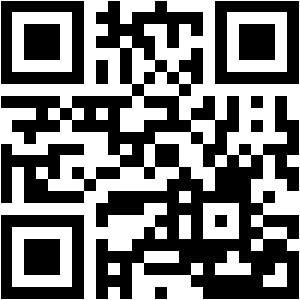| University | Auckland University of Technology (AUT) |
| Subject | PHMY803 Pharmacology |
Assessment One PHMY803
Note: There is a choice of two assignment options
Task overview:
To critically review research evidence to support the analysis of pharmacology science, benefits and risks of medications used in the management of a specified condition or clinical indication.
Learning Outcomes Assessed in this Assignment
1. Examine the pharmacokinetics and pharmacodynamics of selected drugs.
2. Analyse and apply pharmacology science, clinical guidelines, and research evidence to the therapeutic use of drugs.
3. Present work at the appropriate academic standard
Option One Instructions
1. Select a condition or clinical indication that you see patients present with in your clinical practice.
2. Select a medication regimen of 3-4 medications that are used to manage or treat that condition either as a maintenance regimen or with maintenance plus added medication for an acute flare, exacerbation or presentation.
3. If your clinical practice is frontline paramedic practice, or emergency clinical practice then you can select a condition you commonly see patients present with that you need to treat in the acute phase or with current exacerbation of symptoms. In this situation you can include medications from the existing regimen as well as the medications that you administer in the current presentation to make up the 3- 4 medications.
4. Provide a brief overview of the pathophysiology – just enough to set the scene for a multiple medication regimen (LO1).
5. Analyse each of the 3-4 medications in the regimen in terms of the
pharmacodynamics, any significant pharmacokinetics that you need to be mindful of, contraindications and any significant adverse effects (LO1, LO2).
6. Explain the synergistic benefits (or lack of benefit) achieved by these medications being co-prescribed in a regime (LO1, LO2).
7. Critically analyse the additional risks posed by the co-prescription of multiple medications in a regime (LO1, LO2).
8. Support your critical analysis with at least four quality, peer-reviewed research articles, and clinical guidelines or procedures (LO2, LO6).
9. Include an introduction and conclusion to your assignment (LO6)
Stuck! Do not Know Assessment Answers?
Hire NZ Native Experts 24/7.
Option Two Instructions
1. Select a condition or clinical indication that you see patients present with in your clinical practice.
2. Select 3-4 medications that can be prescribed as alternatives for treatment options for this condition or clinical indication.
3. Provide a brief overview of the pathophysiology of the condition – just enough to set the scene for a comparison of the medications for managing the condition or clinical indication (LO1).
4. Critically compare each of 3-4 medications in the regimen in terms of the
pharmacodynamics, significant pharmacokinetics, contraindications and adverse effects (LO1, LO2).
5. Critique clinical guidelines on prescription of these medications against research evidence for each the medications for this condition or clinical indication (LO1, LO5).
6. Support your critique with at least four quality, peer-reviewed research articles, and clinical guidelines or procedures (LO2, LO6).
7. Make a justified recommendation for the prescription of one of the medications over the others (LO1, LO2.
8. Include an introduction and conclusion to your assignment (LO6)
Format and referencing instructions
1. Reference List: Include the four research articles and all other literature and
clinical guidelines or professional websites used to develop your thinking and
writing. Use APA 7th edition format. https://aut.ac.nz.libguides.com/APA7th.
2. Declare any use of AI (Grammarly, Studiosity, Co-pilot, Chat GPT etc) on your
Academic Integrity declaration to the front page of your assignment. You are not penalised for the appropriate use of these tools as per the PHMY803 generative AI guidelines and within the AUT guidelines.
https://canvas.aut.ac.nz/courses/7624/pages/genai-at-aut
3. You can include up to two original tables or diagrams (or one of each) that you developed that do not count towards your word count.
4. Cite the reference sources for the details used to develop the table or diagram. Make sure you refer to the table or diagram in the written text of the assignment to give context to it.
5. We do not award any marks for diagrams or tables from reference sources – we only mark the standalone explanations around these in the written text of your assignment.
Buy Custom Assignment & Homework Solutions
Pay to NZ Native Writers | Cheap Cost & Plag Free
Submission Information
Submission: Electronic submission through the PHMY803 Canvas Course Assignment site. The submission will automatically submit through Turnitin -two attempts at submission with one return of a Turnitin report
| Learning Outcome / Criteria | A Range | B Range | C Range | D Range |
|---|---|---|---|---|
| LO1: Examine the pharmacokinetics and pharmacodynamics of selected drugs | Advanced scholarly examination of clinically relevant pharmacokinetics and pharmacodynamics. | Synthesised information to explain clinically relevant pharmacokinetics and pharmacodynamics. | Paraphrased descriptions of some clinically relevant pharmacokinetics and pharmacodynamics. | Descriptions of clinically relevant pharmacokinetics or pharmacodynamics not evident. |
| LO2: Analyse and apply pharmacology science, clinical guidelines, and research evidence to the therapeutic use of drugs | Advanced examination of pharmacology science, clinical guidelines and relevant research evidence. Scholarly discussion of the risks and benefits of the medication or regimen. Excellent quality, peer-reviewed research evidence synthesised and cited to support discussion. Advanced reporting and interpretation of research findings and statistics. | Relevant explanation of pharmacology science, clinical guidelines and research evidence. Accurate discussion of risks and benefits of the medication or regimen. Some high-quality research evidence summarised to support the discussion. Some research findings and statistics reported appropriately. | Relevant descriptions (some paraphrased) of pharmacology science, clinical guidelines and some research evidence. Some risks and benefits mentioned. Some research cited to support writing with textual descriptions of evidence. Statistics not cited or not reported appropriately. | Lacks any relevant description of pharmacology science, clinical guidelines and research evidence. Inadequate or inaccurate discussion of risks and benefit. Little or no research evidence cited to support writing. |
| LO6: Present work at the appropriate academic standard | A Grade | B Grade | C Grade | D Grade |
| Presentation | All instructions followed | Most instructions followed | Some instructions followed | Instruction not followed |
| Structure | Well-structured and coherent. Structure enables understanding. Sentences and paragraphs flow, relevant structure used. | Structured and coherent | Structure enables understanding | Structure does not enable understanding |
| Scholarly Level | Demonstrate significant capacity to present at a scholarly level | Consistent demonstration of capacity to present at a scholarly level | Capacity to present at a scholarly level is evident | Does not demonstrate capacity to present at a scholarly level |
| Language, Grammar, Spelling, Specialist Terms | Consistently accurate use of language (including grammar and spelling). Succinct application of specialist terms used with breadth and depth. | Consistently accurate use of language (including grammar and spelling). Succinct application of specialist terms. | Accurate use of language (including grammar and spelling). Relevant application of specialist terms. | Accurate use of language (including grammar and spelling) and relevant application of specialist terms are not evident. |
| Sources – Integrity, Acknowledgement, APA Referencing Format | All sources acknowledged and referencing accurately. | All sources acknowledged and referenced accurately with minimal error. | The majority of sources acknowledged and referenced accurately. | Few sources acknowledged and referenced inaccurately. |
| Relevance – Appropriate, Reputable, Currency | All sources are relevant with evidence of breadth and depth. Where academic, all sources used are refereed, contemporary or seminal. | All sources are relevant with evidence of breadth and depth. Where academic, the majority of sources used are refereed, contemporary or seminal. | The majority of sources are relevant with evidence of breadth and depth. Most sources used are refereed, contemporary or seminal. | Sources are not relevant. |
| Range of Sources | Extensive range of sources | Broad range of sources | Adequate range of sources | Inadequate range of sources |
In quest for a professional assignment help?
Flexible rates compatible with everyone’s budget
Struggling with your PHMY803 Pharmacology Assignment? Get expert support from NZ Assignment Help with science assignment help, covering pharmacokinetics, pharmacodynamics, and critical analysis of drug regimens. Our service helps you save time, meet academic standards, and achieve top grades with a best assignment writing service.
- Nursing Assignment 3 : Factors that Impact Registered Nurses’ Ability to Influence National Government Health Policy
- The Management and Behaviour or Pregnant Sows on Pasture Assignment 1 | Massey University (MU)
- HAS 962 – Occupational Hygiene: Measurement Assessment 4 AIOH Technical Report | UOW
- IT00143 Install & Optimize Software Applications Assignment | Pacific Polytech
- Digital Tourism and Hospitality Assignment Report | Auckland University of Technology
- HEAL840 Critical Enquiry for Evidence Based Practice Additional Assessment Opportunity (AAO) Semester 1 2025
- RES903 Research Dissertation Assessment One | Nelson Marlborough Institute of Technology (NMIT)
- 71338 Managing Change Assessment 3 Strategy and Implementation Report | Open Polytechnic
- BSRV4601 Fundamentals Real Estate Assignment 1: Eligibility and licensing | Open Polytechnic (OP)
- MGMT801 Managing in a Multi-Cultural Environment Assignment 1 Report, Auckland Institute Of Studies (AIS) New Zealand


